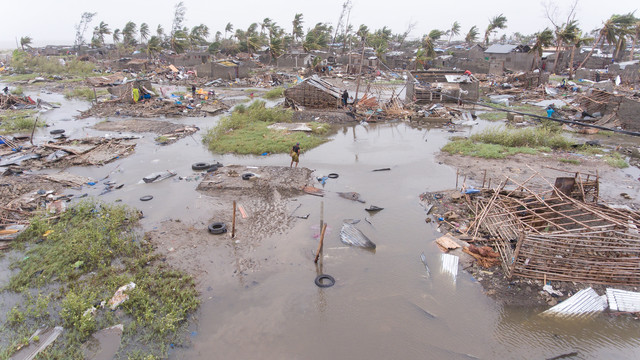COP decision on loss and damage: two steps forward, one step back
The agreement to have a loss and damage fund has been hailed as the big success of the recent COP27 negotiations in Sharm el-Sheikh. But while this is a huge step forward, as Ritu Bharadwaj and Tom Mitchell point out, there are still significant issues to resolve to ensure a just result for everyone.



Plenary session at COP27 in Sharm el-Sheikh (Photo: Rory Arnold/No 10 Downing Street, via Flickr, CC BY-NC-ND 2.0)
The three-decade long fight of countries made vulnerable to climate change by the actions of developed countries has finally come to an end with developed countries acknowledging that loss and damage is happening, they are responsible, and a new loss and damage fund is required.
The decision on the fund, made in the final hours of COP27, is indeed momentous. People such as Saleemul Huq of the International Centre for Climate Change and Development (ICCCAD), who have been pushing for this result for years, should take enormous credit, while probably being the first to realise that there are some major loose ends to tie up.
Many countries are already spending billions on managing loss and damage, and those struggling to pay are getting stuck in vicious debt spirals. IIED research shows that women in rural Bangladesh are spending up to 30% of their expenses on measures to protect themselves from climate-related disasters such as flooding and storms.
The COP27 decision to leave the way the fund would work and the sources of its financing to next year’s conference (COP 28) will just make these people’s suffering worse. There are no details from the COP decision on how much money will be available, how it will be distributed, when it will start flowing and how it can be accessed by the people who desperately need it.
Experience to date is hardly reassuring. The UNFCCC Adaptation Funds have been woefully underfunded, took years to start disbursing money, still barely get resources to those who need them, are mired in bureaucracy, and the latest COP27 agreement has done little to improve things.
The loss and damage fund must not follow the same path and any delaying tactics by developed countries must be countered.
Acknowledge moral responsibilities with humility
In Sharm el-Sheikh, the original draft text on loss and damage finance proposed by the presidency was much stronger, but rich nations watered down the language and delayed immediate action by deferring the set-up process.
A fundamentally contentious issue was the demand of developed countries to have a wider set of contributors to the fund, implicating India, China and Gulf States, among others. When combined with a push to focus funding eligibility only on the countries most vulnerable to climate change, rather than all developing countries, some negotiators from middle-income countries were dismayed that rich countries were trying to divert, delay and divide, rather than acknowledge their moral responsibilities with humility.
Even on an emissions path that limits global warming to 1.5°C, the world is set to see large-scale loss and damage because of the warming already ‘locked in’.
The greatest impacts are already being felt by those who have done least to cause it. In 2019, the average carbon footprint of a person living in a developed country was 23 times higher than one from a least developed country.
What would climate justice look like?
So what does climate justice feel like for those Bangladeshi women facing climate impacts and crippling debt?
- First, the basics must be got right. This means clean drinking water, good sanitation, access to clean electricity, public services, connections to markets and basic infrastructure
- Second, there must be the opportunity to leapfrog if a high-carbon development pathway is no longer a real option, or assistance given to them to migrate if desired, and
- Third, they must have the resources to adapt to climate impacts, and compensation for loss and damage if it occurs. Those richer countries who have enjoyed the benefits of a high carbon development pathway must take the initiative in getting resources to where they are needed.
The current multilateral delivery system is horribly unfit for purpose, optimised for accountability to donors rather than being responsive to the needs and priorities of people in communities, and riven with hoops to jump through. Reform of this system will take too long.
A new multilateralism is needed, designed for speed and transformation, and developed nations must show they are serious about climate justice by taking the lead.
People dubbed COP27 the COP for ‘action’, and while the loss and damage fund is a critical step forward, it ended up being a COP for more process and protracted decisions.
The efforts to develop the loss and damage fund must break the status quo – be designed for speed, access, scale and flexibility –and always remember this is about solidarity and compensation. Anything less is not climate justice.




